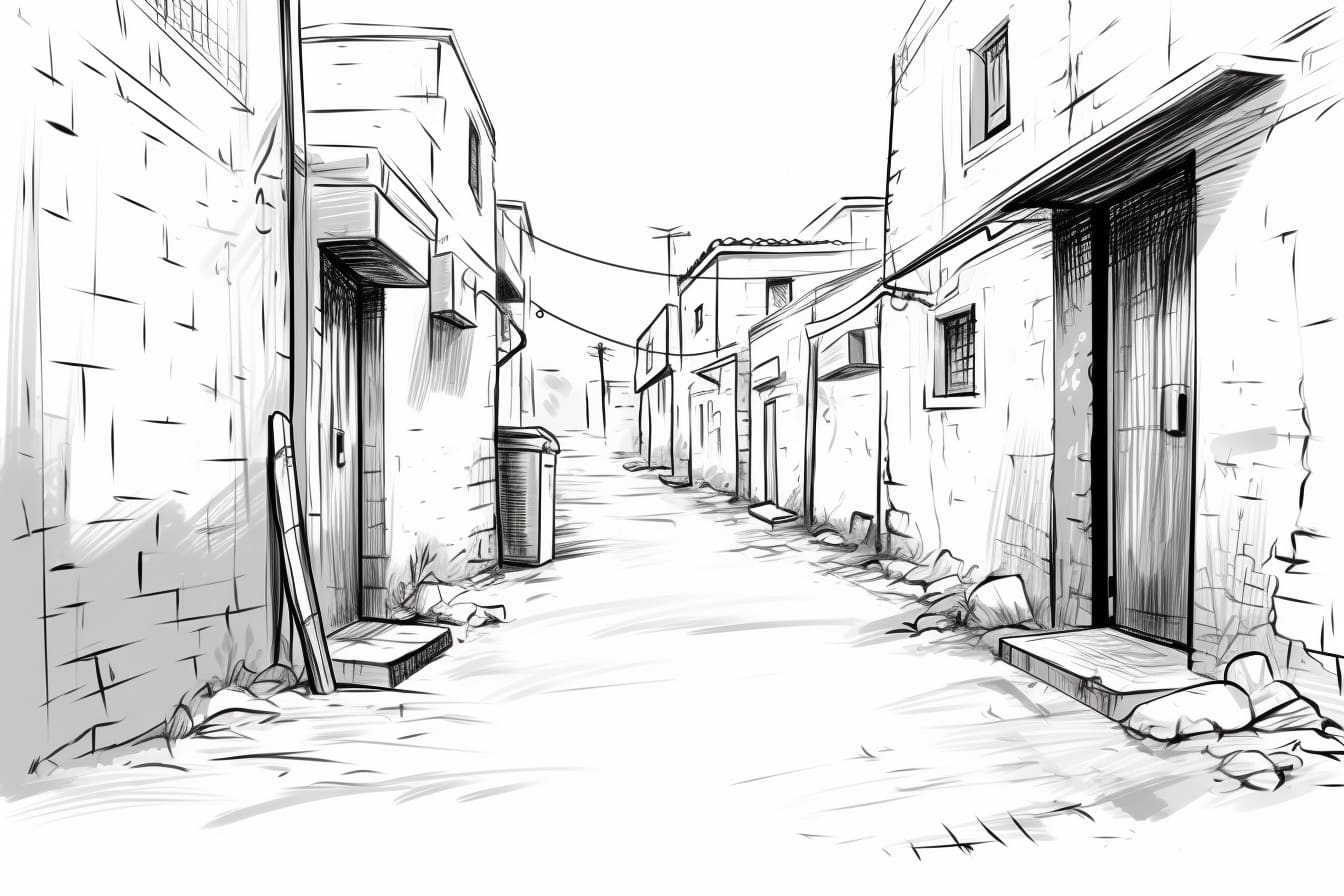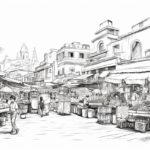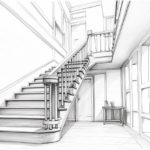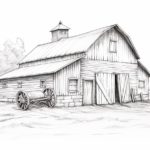Drawing alleyways can be a fascinating exercise in capturing the hidden beauty and mystery of urban landscapes. Alleyways are often overlooked spaces filled with character, history, and unique architectural details waiting to be discovered and immortalized on paper. In this artistic journey, we will explore the art of drawing alleyways, focusing on perspective, light and shadow, texture, and composition to bring these often overlooked spaces to life. Join me as we delve into the world of urban sketching and unlock the charm and allure of drawing alleyways.
Materials Required
To draw an alleyway, you will need the following materials:
- Drawing paper or sketchbook
- Pencils (varying hardness for shading and detailing)
- Eraser (preferably a kneaded eraser for precision)
- Sharpener
- Ruler (for straight lines)
- Pen or fine liner (optional for adding details or outlines)
- Reference photo of an alleyway (optional but helpful for accuracy)
These basic materials will help you create a detailed and realistic drawing of an alleyway. Feel free to experiment with different tools and techniques to achieve the desired effect.
How to Draw an Alleyway: a Step-by-step Guide
Step 1: Gather Your Materials
Start by gathering all the necessary materials for drawing the alleyway. You will need a pencil, eraser, paper, ruler, and any preferred coloring materials such as markers, colored pencils, or watercolors.
Step 2: Determine the Perspective
Decide on the perspective you want to depict the alleyway from. This will help you establish the vanishing points and horizon line for accurate proportions.
Step 3: Sketch the Horizon Line and Vanishing Points
Using your ruler and pencil, lightly draw the horizon line across your paper. Then, mark the vanishing points on the horizon line. These will guide the convergence of parallel lines in the alleyway.
Step 4: Outline the Buildings
Start by drawing the outlines of the buildings on each side of the alleyway. Use straight lines to create the basic shapes of the structures, ensuring they align properly with the perspective you’ve chosen.
Step 5: Add Details
Add details to the buildings such as windows, doors, and architectural elements. Pay attention to how these details recede into the distance following the perspective lines.
Step 6: Draw the Alleyway
Sketch the ground of the alleyway, considering the texture and any elements like cobblestones or debris. Use the perspective lines to guide the width and depth of the alleyway.
Step 7: Add Shadows and Lighting
Enhance the depth and realism of your drawing by adding shadows and lighting. Consider the light source and how it affects the buildings and ground in the alleyway.
Step 8: Finalize the Drawing
Refine any details, make necessary adjustments, and clean up any stray lines with your eraser. Consider adding color to bring your alleyway drawing to life, using shading techniques to create depth and dimension.
Step 9: Review and Revise
Take a step back and review your drawing. Make any final revisions or additions to enhance the overall composition and visual impact of your alleyway scene.
Conclusion
In conclusion, drawing an alleyway can be a challenging yet rewarding experience for artists of all skill levels. By following the steps outlined in this article, you can learn to capture the unique atmosphere and character of an alleyway through your artwork. Remember to practice regularly, observe your surroundings closely, and experiment with different techniques to develop your own style and bring these urban scenes to life on paper. With dedication and patience, you can create captivating alleyway drawings that truly showcase your artistic talent.
Fun Facts About Alleyways
- Alleyways have been an integral part of urban planning for centuries, dating back to ancient civilizations such as the Roman Empire.
- In medieval Europe, alleyways were often narrow and winding to confuse invaders and prevent the spread of fires.
- Many famous cities around the world, such as London, Paris, and Tokyo, are known for their historic and picturesque alleyways.
- Alleyways have been featured in numerous works of art, literature, and film, often depicted as mysterious and romantic settings.
- In some cultures, alleyways are associated with secrecy, illicit activities, and hidden gems, adding to their allure and mystique.
- Alleyways are often home to street art, graffiti, and murals, showcasing local artists and adding vibrancy to urban spaces.
- Some cities have transformed their alleyways into vibrant pedestrian-friendly spaces with cafes, shops, and art installations, creating unique experiences for residents and visitors.
- Alleyways can serve as important shortcuts for pedestrians and cyclists, providing alternative routes through bustling city centers.
- Alleyways are sometimes used for community events, markets, and festivals, bringing people together in unexpected and creative ways.
- Despite their reputation for being dimly lit and potentially unsafe, many alleyways are now being revitalized and reimagined as safe, welcoming spaces through urban renewal initiatives and community engagement efforts.
Suggestions for Scenes and Settings for Alleyway Drawings
Of course! Here are some specific suggestions for scenes and settings you can explore when drawing alleyways:
- Urban Alleyway at Night: Capture the mysterious and moody atmosphere of a narrow alleyway illuminated by the warm glow of streetlights and neon signs.
- Historic European Alleyway: Draw a charming cobblestone alley lined with rustic buildings, flower boxes, and vintage lanterns.
- Graffiti-Covered Alleyway: Create a vibrant and gritty scene featuring colorful graffiti art adorning the walls of an urban alley.
- Industrial Alleyway: Illustrate a stark and utilitarian alley filled with dumpsters, metal staircases, and pipes, conveying a sense of urban decay.
- Alley in a Foreign Market: Imagine a bustling alley in a vibrant foreign market, filled with stalls selling exotic goods, fruits, and textiles.
- Rural Countryside Alleyway: Depict a peaceful country lane flanked by wildflowers, rustic fences, and quaint farmhouses in the distance.
- Fantasy Alleyway: Let your imagination run wild and create a magical alleyway straight out of a fantasy world, complete with mystical creatures, enchanted doorways, and glowing crystals.
- Alleyway in Different Seasons: Explore how the same alley transforms with the changing seasons – from a snowy winter alley to a blooming springtime lane or a colorful autumn path.
- Abandoned Alleyway: Illustrate a deserted alley reclaimed by nature, with vines creeping up the walls, broken windows, and a sense of eerie abandonment.
- Alleyway from a Cat’s Perspective: Get creative and draw an alleyway scene from the viewpoint of a curious cat, showcasing hidden nooks, perching spots, and the cat’s-eye view of the world.
Remember to play with perspective, lighting, textures, and details to bring each alleyway scene to life and add your own unique artistic flair to make them truly captivating. Happy drawing!









